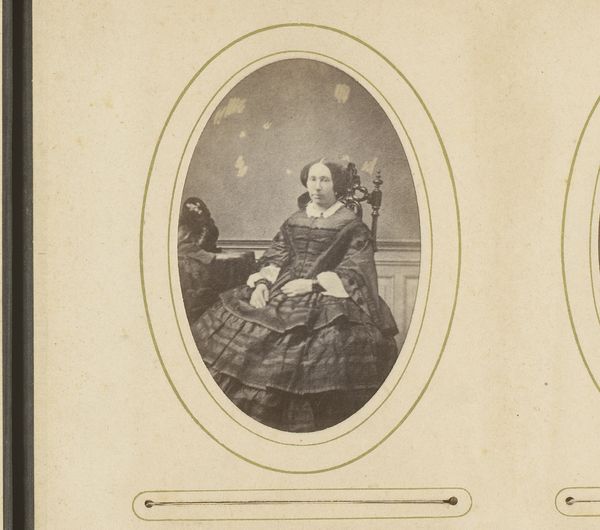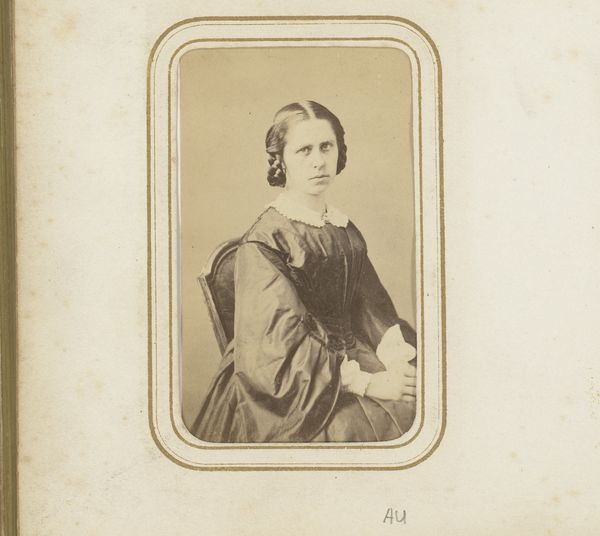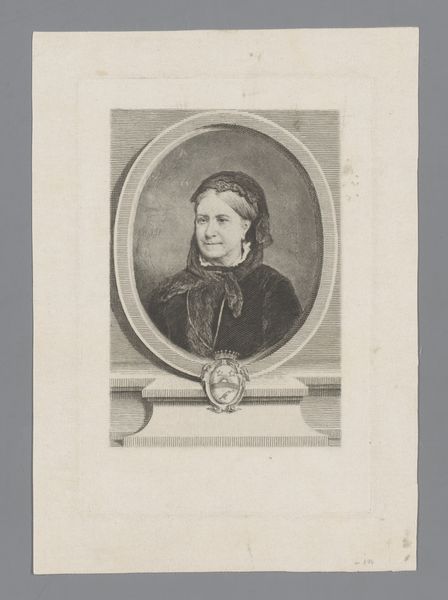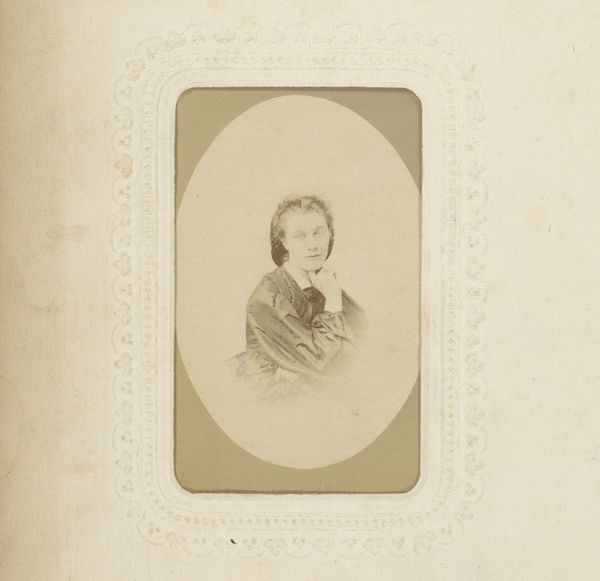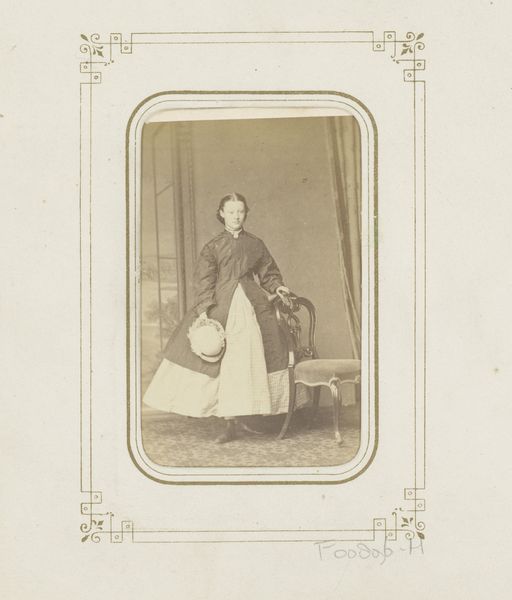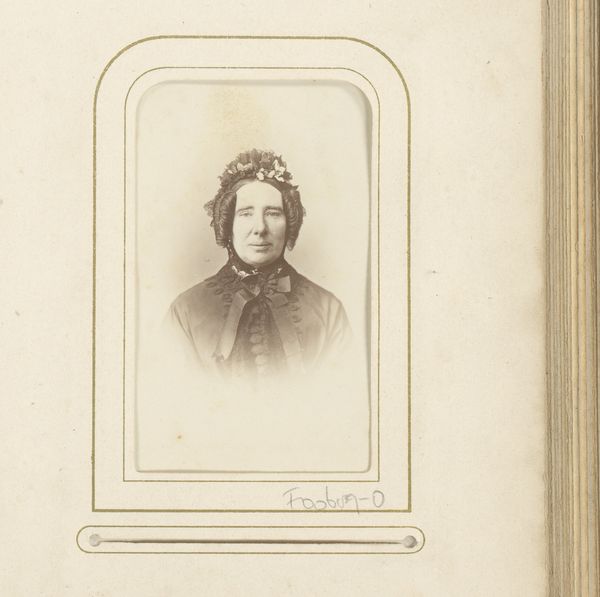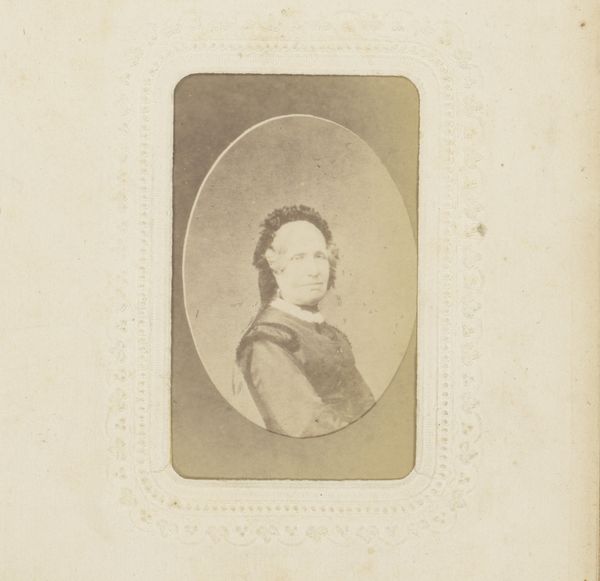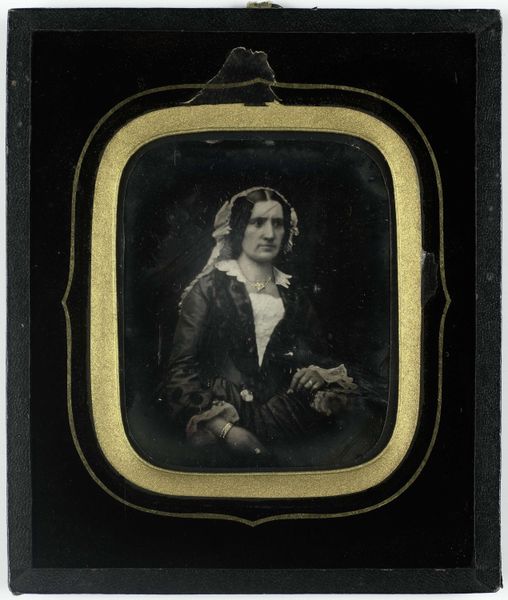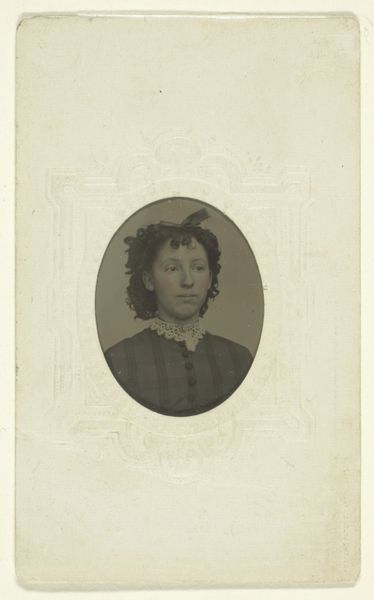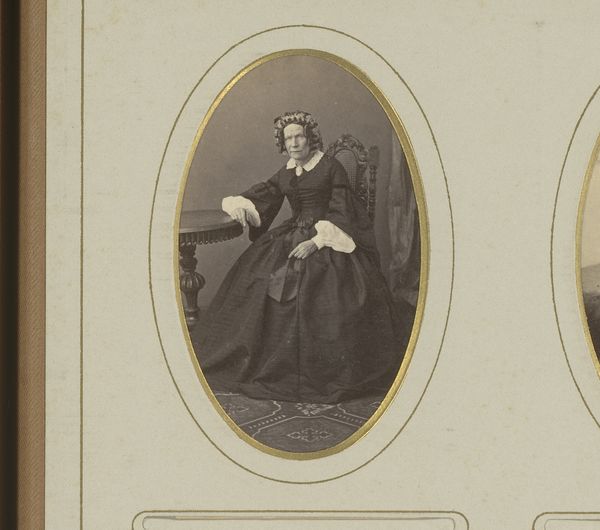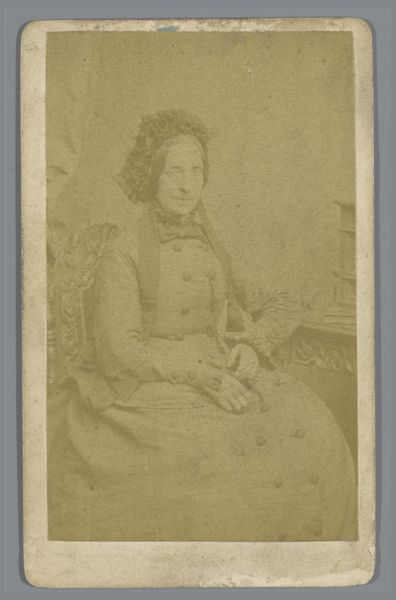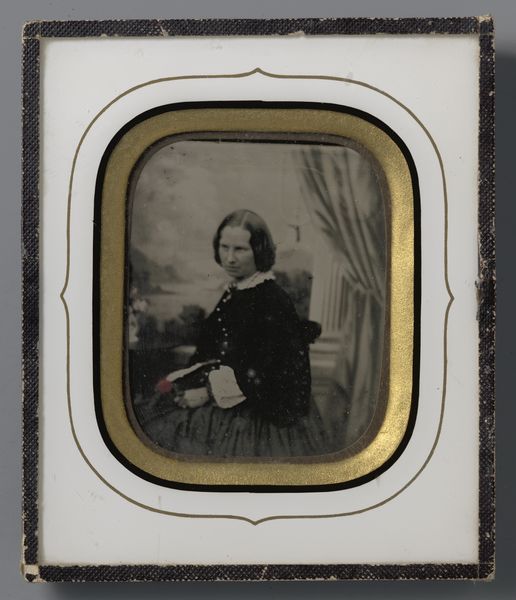
photography
#
portrait
#
photography
Dimensions: height 103 mm, width 61 mm
Copyright: Rijks Museum: Open Domain
Editor: This photographic portrait, "Portret van een onbekende vrouw," created between 1860 and 1872 by Charles Billotte & Cie., feels incredibly intimate despite the distance of time. The woman’s direct gaze is striking. What do you see when you look at her? Curator: I see a careful performance of identity. Notice the stark lighting, the rigid pose. It echoes the symbolic weight of earlier portraiture, almost like a secular icon. These visual cues tell us much about the sitter's social aspirations. The photographic medium itself democratized image-making but maintained visual traditions. Editor: That's interesting. I was so focused on the woman's expression; I hadn't considered the conventions at play. Curator: The woman holds a carefully positioned fold of fabric in her lap; it could signify domestic virtue or societal restraint. The ruffled collar could represent not just status, but the fragile boundary between inner self and outward presentation. Consider how her features, illuminated with such direct light, can suggest a deep, complex psychological background. Do you agree? Editor: Absolutely. I also wonder who this "unknown woman" really was, beyond these codes. What were her dreams? What objects did she value? Curator: That tension—between the image and the unknown—is central. Photography promised a replica of reality, but its conventions reveal so much cultural mediation. Ultimately, the unknown remains a potent, intriguing void, inviting reflection on women in history, memory and identity. Editor: This was insightful. Thank you for highlighting how every detail, from pose to garment, builds a narrative we can still decode. Curator: Indeed, every image is a cultural artifact waiting to speak.
Comments
No comments
Be the first to comment and join the conversation on the ultimate creative platform.

